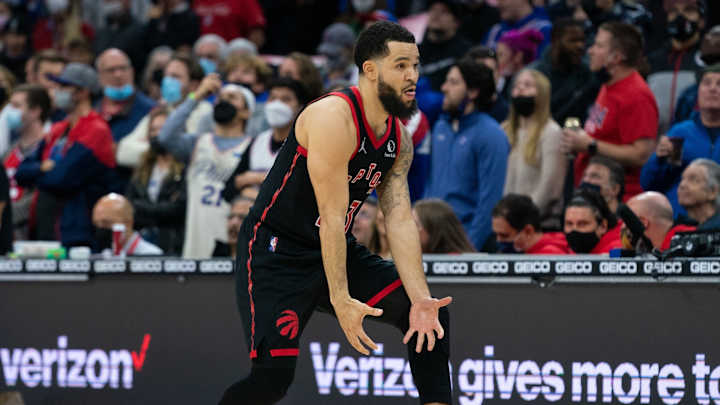Raptors Believe an Egalitarian Late-Game Offense Will Work Best in the Clutch

The Shot made everything seem so simple. Just give the ball to Kawhi Leonard, get out of the way, and let arguably the best player in the world at that time take — and make — the game-winner.
Easy peasy.
If only it was that simple.
In the 2019 playoffs, the Toronto Raptors took 14 clutch field goals in which they were either winning or losing by three or fewer points in the last 30 seconds (save for one wide-open layup on a scramble play). Remember, this team went on to win an NBA championship. This was the best team in the world with Mr. Clutch Kawhi Leonard leading the way. How many of those 14 shots did they make?
Three.
And Leonard? He made one. The Shot.
The other two were made by Kyle Lowry, who hit a driving layup in Game 4 of the Finals to pull the Raptors to within one before he ultimately missed the game-winning three-pointer in the corner, and Pascal Siakam, who made the final field goal of the playoffs, a driving floater over Draymond Green to put Toronto up three in Game 6 of the Finals. That’s it. And of those 14 field goals, Leonard only attempted six, passed out of another five, and never touched the ball on the other three, two of which were makes.
“It’s amazing… how very very very few [games] are won by giving the guy that’s actually supposed to shoot the shot shooting it,” Raptors coach Nick Nurse said following Sunday’s practice. “The percentages on that are extremely low.”
That’s why the Raptors have gone with a more egalitarian approach to the clutch this season. They don’t want opposing teams to be able to key in on one or two players. Instead, Nurse believes in attacking an advantage, putting one of Fred VanVleet, OG Anunoby, Siakam, or Gary Trent Jr., who is yet to get an attempt in the clutch, in an advantageous position with a chance to play hero.
But still, plays in the clutch rarely go as planned. Toronto is 2-for-8 in the clutch this season with their two makes coming off passes, first from Anunoby to VanVleet for a corner three-pointer against Philadelphia and more recently from VanVleet to Justin Champagnie to tie the game up late against the Oklahoma City Thunder.
It’s just so incredibly difficult to actually make shots in the clutch, especially when you’re hamstrung by the fear of a turnover, the clock, and other teams ramping up their defensive intensity for the final few possessions. Letting one player handle the ball in isolation might be the best way to limit turnovers, but even the best isolation scorers only generate about one point per possession and usually not even that.
“Yet when that happens, everybody says: 'why didn't they move the ball, and why don’t they set some screens,'” Nurse said. “Well, the reason we didn’t run a seven-pass play with cutting all over the places is we didn't want to throw the ball away under immense pressure, under holding, under, you know, there’s all kinds of things.”
So while the Raptors may still be working out the kinks of their late-game offense, trying to sort out who options A, B, C, and D should be, the truth is there rarely are good options in the clutch. It usually just comes down to offensive rebounding, making decisions on the fly, and, frankly, a little bit of luck. Draw up the best play you can, give the ball to the player with the biggest advantage, and hope the shot finds its way in, even if it takes four bounces. If it falls, nobody will care what it looked like.
Further Reading
Raptors forced to adjust as COVID-19 worsens around the NBA
Mentoring Scottie Barnes has been 'challenging' albeit 'fun' experience for Fred VanVleet
3 Raptors trade scenarios for Myles Turner: Pacers writer analyzes
